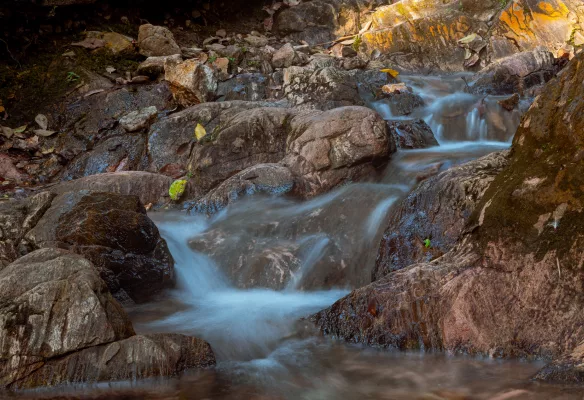According to the Ifa oracle, Àọ̀pẹ́ẹ̀rẹ́ Ìjẹ̀ was a hunter who left Ilé-Ifè several years ago in the company of his friend named Eléfòṣán and some other brave hunters on a hunting expedition down to the mountainous terrains that would later be known as Ikogòsì.
Àọ̀pẹ́ẹ̀rẹ́ Ìjẹ̀ was an extraordinarily rich man. He was also described as light in complexion, tall and very handsome. He was a hunter, a lover of palmwine who tapped his own raffia wine, a subsistence farmer and a healer with natural herbs and mystical powers. He fell in love with the richness of the area because it was good for palmwine tapping, farming, and hunting, and he decided to settle down there.

A Tale of Two Wives
A common display of wealth in those ancient times was by the number of wives a man marries. But Àọ̀pẹ́ẹ̀rẹ́ Ìjẹ̀ decided to have just two wives despite having the capacity to marry more. His first wife, Àwẹ̀lé, was a beautiful, dark-skinned woman, who was calm-headed and reputed to have been so endowed with full breasts and heavy backside. Unfortunately, Àwẹ̀lé could not have a child in the marriage and after so many trials and out of love for her husband, she suggested that he should marry another woman who would bear him a child. Some years later, Àọ̀pẹ́ẹ̀rẹ́ Ìjẹ̀ considered Àwẹ̀lé’s suggestion and took another wife. Her name was Òrósun.
Òrósun was the complete opposite of Àwẹ̀lé’s gentileness and complexion. She was tall, fair-skinned, and extremely beautiful. But she was neither as calm nor levelheaded as Àwẹ̀lé.
Yet Àọ̀pẹ́ẹ̀rẹ́ Ìjẹ̀ was able to achieve a very cordial and happy coexistence in his polygamous family.
Unfortunately, both women did not have children of their own for a long time. This snag of barrenness, however, did not deter them from doing the good work of healing. Àọ̀pẹ́ẹ̀rẹ́ Ìjẹ̀ and his wives were known far and wide as great herbalists who with their herbs and concoctions were also assisting barren woman to conceive and bear children.
For the Love of Family – The Making of the Springs
As the years rolled by, Àwẹ̀lé and Òrósun got pregnant at the same time. They were blessed with a boy and a girl. Though it was not known which one of them gave birth to the boy or girl, considering the behaviors of the wives, one could assume that Àwẹ̀lé gave birth to the cool-headed boy whose name was Olósún while Òrósun had Òorà, the cantankerous girl.
Like some powerful men of his days, Àọ̀pẹ́ẹ̀rẹ́ Ìjẹ̀ knew when he would soon join his ancestors. He considered immortalizing his name by transforming into a rock, mountain, river, or a stream. He eventually decided to turn into a stream that would flow endlessly, retaining freshness and carrying the magical power of healing.
Around this time Òorà was in her husband’s house in Iléṣà having left behind Àọ̀pẹ́ẹ̀rẹ́ Ìjẹ, Àwẹ̀lé, Òrósun and Olósún. When Àọ̀pẹ́ẹ̀rẹ́ Ìjẹ entered the ground, bubbles of an unusually warm water – like he used to conjure – started gushing out of the ground. The two wives and son cried and pleaded with him not to leave them. Out of compassion for them, he turned back into his human form and promised to give them the magical power they could use to turn to water if they wished. He gave them a condition, however, that the powerful charm must also be sent to Òorà in Iléṣà.
Òorà’s flight.
Olósún rushed down to Iléṣà to inform Òorà about the transformation of their father into a flowing water. Òorà in great excitement followed her brother down to their settlement. She was however disappointed when she saw that the flowing water her father turned to was nothing compared to the great Niger River. In anger, Òorà chastised her father, that despite his great powers, all he could turn into was a mere spring that could not drown even a chicken. This unruly behavior got Àọ̀pẹ́ẹ̀rẹ́ Ìjẹ ̀incredibly angry and he, in his human form, used his ọ̀bẹsìlò to cut the right leg of his daughter.
Òorà ran out of Ikogosi in great anguish. The trail where she passed through is called yàrà which is still visible in Ikogòsì today. She later became the Òorà stream that flows in Iléṣà till this day.
And Four Become One.
After so many deliberations, Àwẹ̀lé, Òrósun and Olósún decided to turn to flowing springs too. Olósún, who was a great youth coordinator and leader of his time turned into another warm spring like his father. Some people to this day still consider him to be the first leader of Ikọgòsì. The warmth of his stream, however, is not as warm as the water of his father. This is probably because he shared the DNA of a warm father with that of a cold mother, as Àwẹ̀lé and Òrósun both became cold streams, with Àwẹ̀lé being colder than Òrósun.
These four distinctly different springs were flowing at first in different directions, but Àọ̀pẹ́ẹ̀rẹ́ Ìjẹ urged the family to carry on the unity that they shared as humans. So Olósún immediately reunited with his father, thereby forming the meeting point of warm and warmer springs, while Àwẹ̀lé and Òrósun reunited with each other at the cold and colder springs meeting point. The two newly formed mixed springs of warm and cold streams, in a further move to fulfill the promise of a wholesome unity and harmony in the family, reunited in a mythical romantic embrace forming the world-famous meeting point of warm and cold springs.
As their story serves as a glowing reminder that it is always possible to lay our differences aside and work together, this meeting point has been known ever since as a force for love, harmony and peaceful coexistence. And with the healing qualities of Àọ̀pẹ́ẹ̀rẹ́ Ìjẹ̀ believed to be inherent in the springs and their surroundings, they are also widely believed to be a source of rebirth and renewal for all who come in contact with them.


